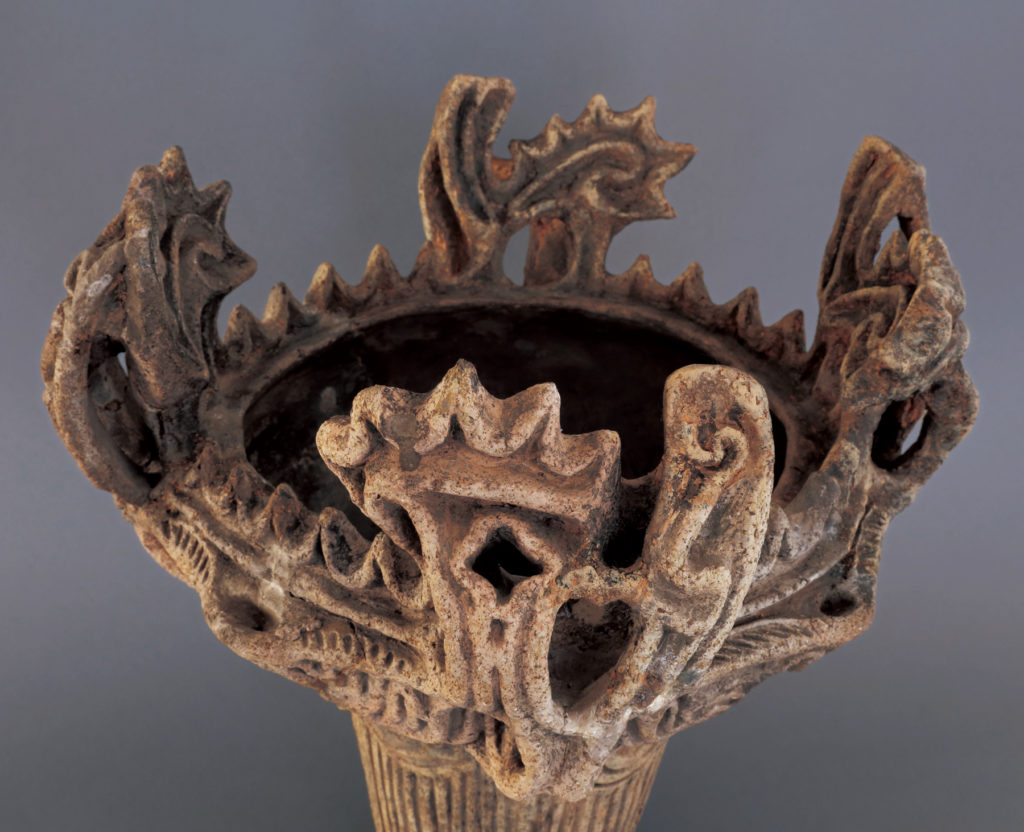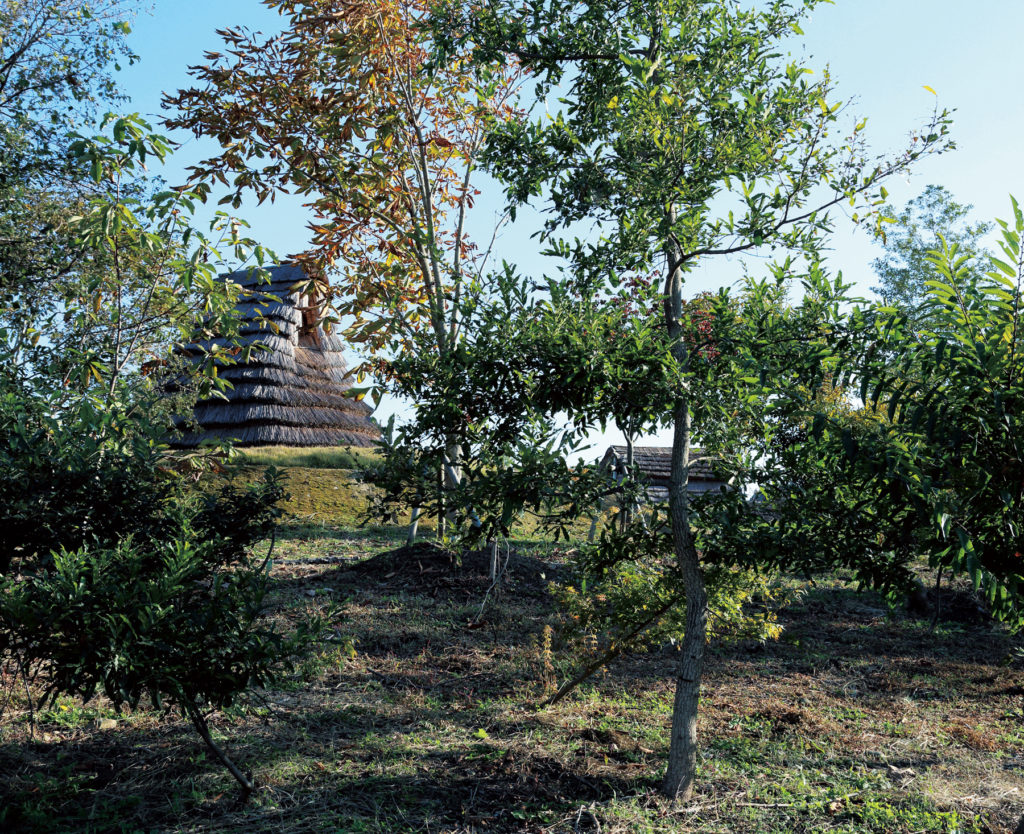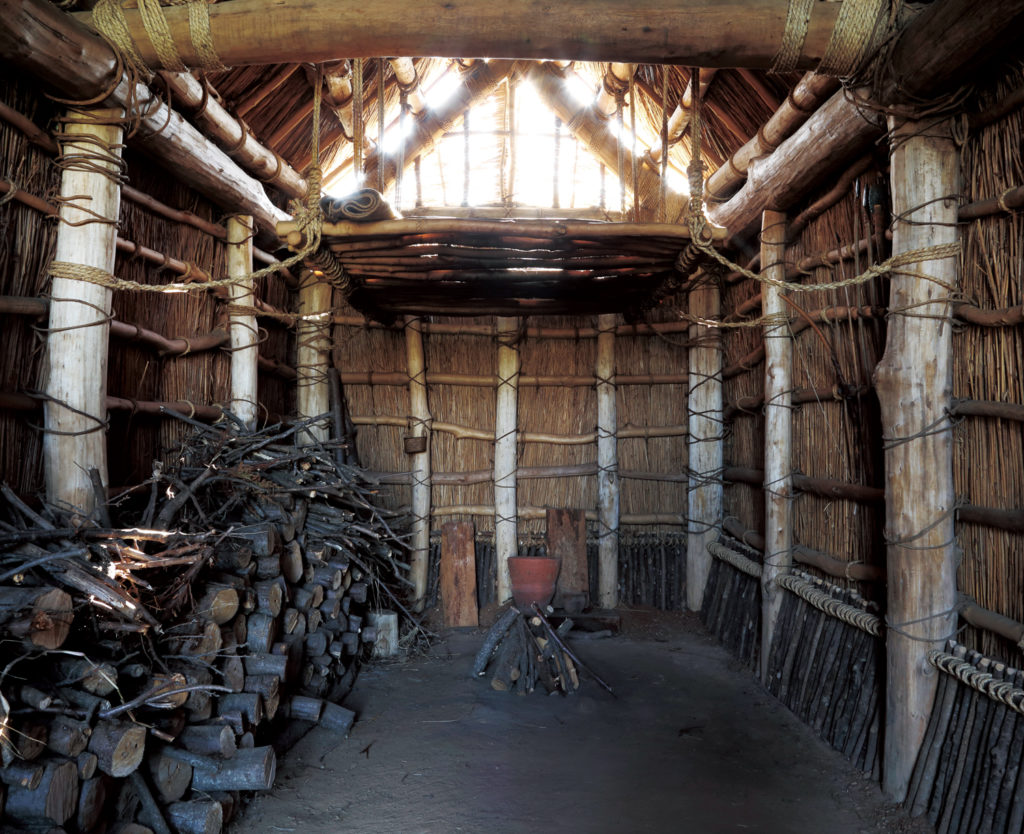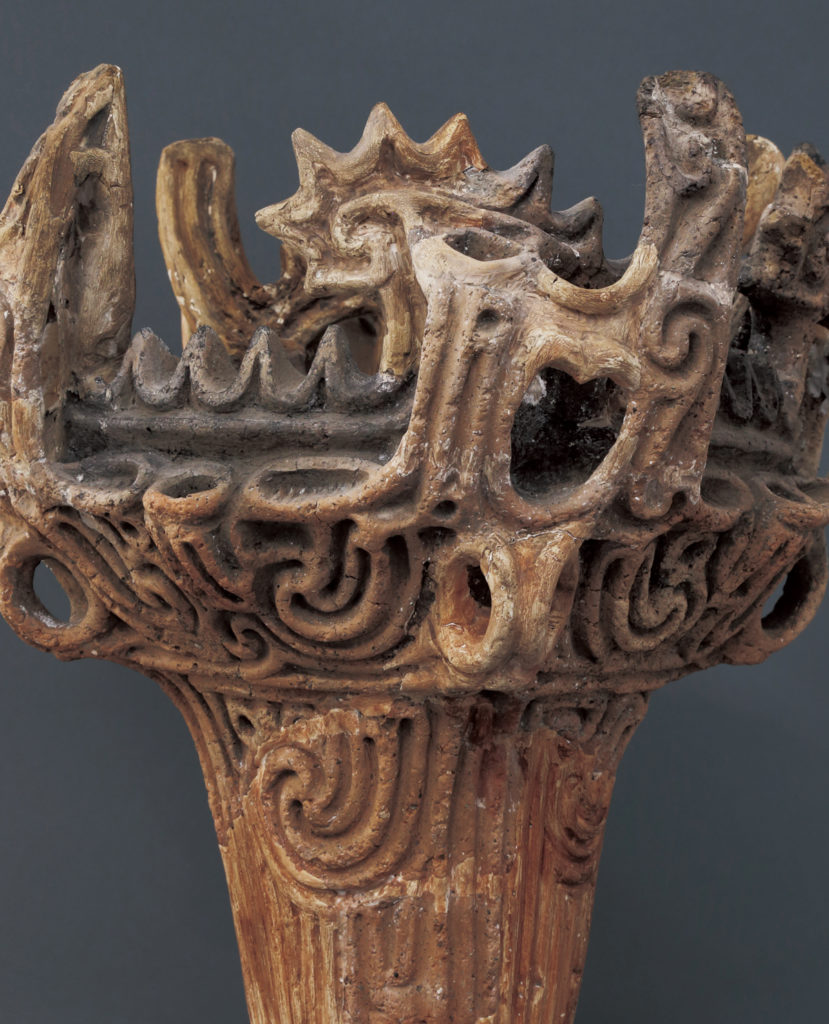Exploring the Tactile Design of Flame Pots
I traced the linear reliefs winding up from the solid trunk of a body, up and out like a burst of energy. This pot had no signature cord markings. The thick, decorated rim looked like a cockscomb from one angle, and from above, like a fish and the splash it created after leaping out of the water, or perhaps like a salmon swimming upstream. As I admired the enigmatic vessel before me, I decided to forget its name for the time being. Today it goes by the name of a “flame pot”—the collective term for flame-style and crown-style pottery from the Jomon period.
Wandering around a strange town without a map offers the reward of surprise encounters and flashes of inspiration. The idea here was similar. I wanted to dispel my preconceptions, examine the pot with an open mind, and let its wonders come rolling in like waves. I shut out modern man’s theory and knowledge, and standards and scales, and focused only on the tactile design of the object.

On this day I was in Nagaoka City, Niigata, visiting the Umataka Jomon Museum and the Umataka–Sanju Inaba Site, containing the ruins of a large settlement on the terrace of the left bank of the Shinano River. The Umataka portion of the site dates back to the Middle Jomon (ca. 5,500 years ago) and the nearby Sanju Inaba portion to the Late Jomon (ca. 4,500 years ago). The combined site is preserved as a National Historic Site of Japan. The museum houses many of the unearthed finds, and the highlight of its display was an entire wall dedicated to flame-style pots. The sheer number of vessels perfectly demonstrated the evolution of flame pots, from the earliest to the latest generations, their forms translating into the passage of time and making my visit ever so worthwhile.
I also learned a little-known fact: Flame pots are believed to have been produced for only 500 years in the long course of the Jomon period. What’s more, the flame pot culture was concentrated in the Shinano River basin and did not spread much farther.


In detail, the pot design looked complex at first glance. But a rather strict set of rules is actually in place, according to my guide, Mr. Nitta from the board of education. Each pot consists of an upper and lower section, and the linear reliefs typically come in an S-shaped or U-shaped pattern. Three-dimensional design expressions were a trend during this period in the Kanto region (currently encompassing Tokyo) as well as the Hokuriku region (including Niigata). I imagined the then-residents of Niigata absorbing the influx of cultures from the surrounding areas, and developing their own variations. By extension, I asked what happened after the era of flame pots, and Mr. Nitta said the flame pots vanished into thin air, and pots with clean forms and cord-marked patterns made a comeback.
Now that I saw the big picture, I recognized a resemblance between Jomon society and our present-day society. Things have gone in and out of style throughout history, and it isn’t an exaggeration to say that fashion and design have been keen reflections of the times in every era. Objects dating back to the Jomon period are no exception. The longer I gazed at the flame pots, the more I wondered about their relationship with snow. This region faces the Sea of Japan and sees heavy snowfall for a good third of the year today. It may have been warmer in the Jomon period, but it couldn’t have been free of snow altogether. And that fueled my curiosity. The residents were clever enough to live with snow. The question was, what role did flames play? I planned to pay another visit to Niigata and study the flame pots anew along with flames in the snow.
<PAPERSKY no.50(2016)>

Jomon Fieldwork | Nao Tsuda × Lucas B.B. Interview
A conversation between ‘Jomon Fieldwork’ Photographer and writer Nao Tsuda and Papersky’s Editor-in-chief Lucas B.B. The two discuss the ways Jomon culture continues to play an important role in modern day Japan. The video was filmed at Papersky’s office in Shibuya in conjunction with Tsuda’s exhibition “Eyes of the Lake and Mother Mountain Plate” held at the Yatsugatake Museum in Nagano.
Nao Tsuda | Photographer
Through his world travels he has been pointing his lens both into the ancient past and towards the future to translate the story of people and their natural world.
tsudanao.com











